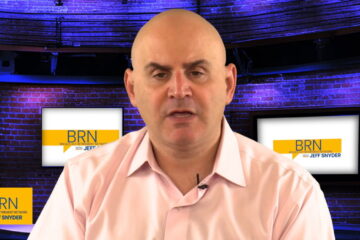Lowe’s (LOW) , a one-stop shop for home improvement goods, continues to see a startling pattern in customer behavior. It’s impacting sales, and its CEO is flagging the source of the problem.
In Lowe’s latest earnings report, it revealed that its comparable sales dipped by 1.7% year-over-year during the first quarter of this year, while the number of transactions dropped by 3.9%.
💵💰Don’t miss the move: Subscribe to TheStreet’s free daily newsletter 💰💵
Foot traffic in its stores also fell during the quarter. According to recent data from Placer.ai, Lowe’s saw visits decline by 3.6%, and visits per location dropped by 3.7%. In April alone, visits even shrank by almost 7%.
Related: Costco quietly limits customer purchases of a beloved product
Amid this concerning trend, Lowe’s generated an operating income of $2.4 billion, which is about 6% lower than what it earned during the same quarter last year.
Lowe’s has seen a particular type of customer spending decline.
Image source: Spencer Platt/Getty Images
Lowe’s CEO sounds alarm on a major problem
During an earnings call on May 21, Lowe’s Merchandising Executive Vice President Bill Boltz said that while “unfavorable weather” across the country in February impacted sales, customers have also avoided making purchases for larger home improvement projects.
“Bigger-ticket project spending remains under pressure in interior categories like flooring, and kitchens, and bath, with many customers still choosing to delay those larger purchases,” said Boltz.
Lowe’s CEO Marvin Ellison also said “elevated mortgage rates” in the housing market are causing this trend to grow legs.
Related: Walmart suffers another major boycott from customers
Currently, the average 30-year mortgage rate in the U.S. remains above 6%, and consumers have been avoiding buying new homes. According to a recent report from the National Association of Realtors, existing-home sales decreased 5.9% month-over-month in March, while total housing inventory increased by 8.1%.
Home Depot, Lowe’s main rival, is noticing similar consumer behavior, which contributed to its lower-than-expected sales during the first quarter.
“Those stubbornly high interest rates [mean] people are painting again and working in their yards and doing smaller projects, but just have not engaged in the larger projects,” said Home Depot CEO Ted Decker during an earnings call on May 20.
Lowe’s addresses a growing threat
Lowe’s is also noticing that customers are mainly concerned with affordability, and it plans to tackle a major threat that could increase prices in its stores.
Last month, President Donald Trump imposed a 10% baseline tariff (taxes companies pay to import goods from overseas) on all countries and paused reciprocal tariffs.
The pause on reciprocal tariffs will end in July, and as a result, roughly 60 countries will soon see higher tariff rates. This could result in consumers paying higher prices for goods if businesses choose to pass along the extra cost.
During the earnings call, Ellison emphasized that Lowe’s will do its best to keep prices “competitive.”
More Retail:
Costco quietly plans to offer a convenient service for customersT-Mobile pulls the plug on generous offer, angering customersKellogg sounds alarm on unexpected shift in customer behavior
“We have tools that will allow us to manage this and manage this in a way that we’re going to minimize any impacts to our customers,” said Ellison. “And as I said earlier, we’re gonna be price competitive.”
One of the efforts the company is taking to achieve this is by further diversifying where it sources its products, moving them away from China. So far, about 20% of its products are imported from China, one of the countries that has the highest tariff rate.
“Although we’re pleased with this reduced dependency, we’re not satisfied,” said Ellison. “And we’re working to accelerate our diversification efforts. Our global sourcing team has identified exciting diversification opportunities in the U.S. and around the globe.”
Related: Veteran fund manager unveils eye-popping S&P 500 forecast


